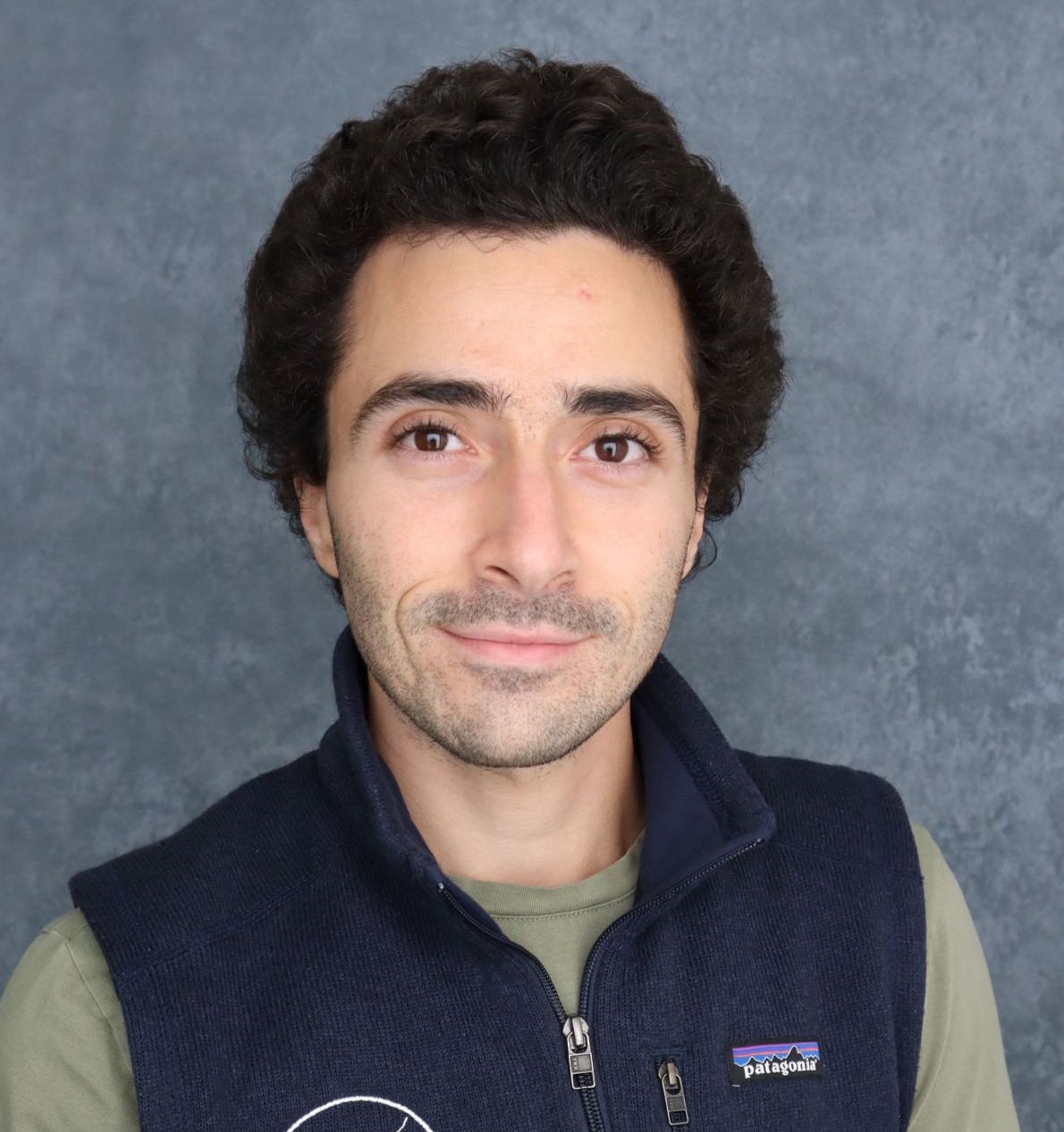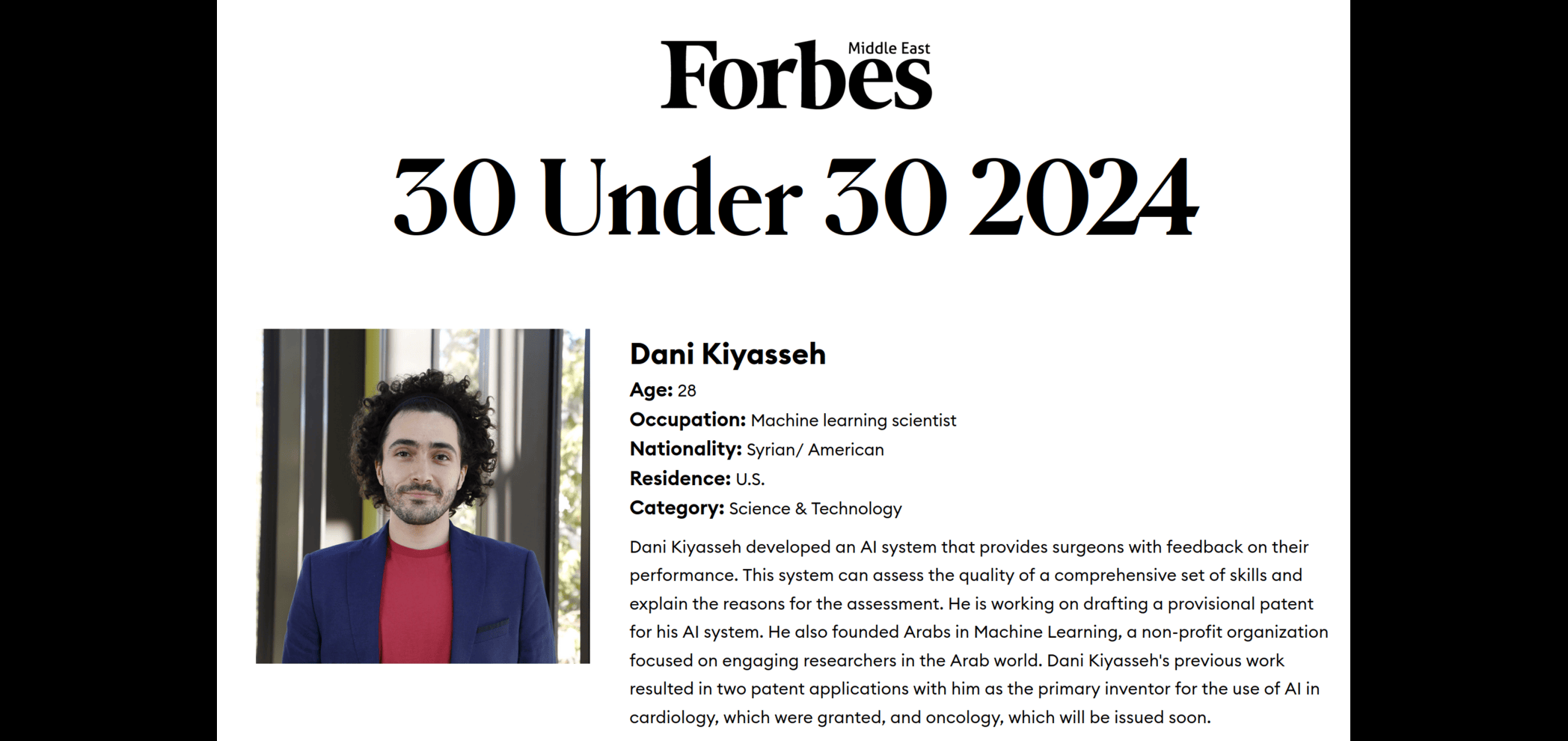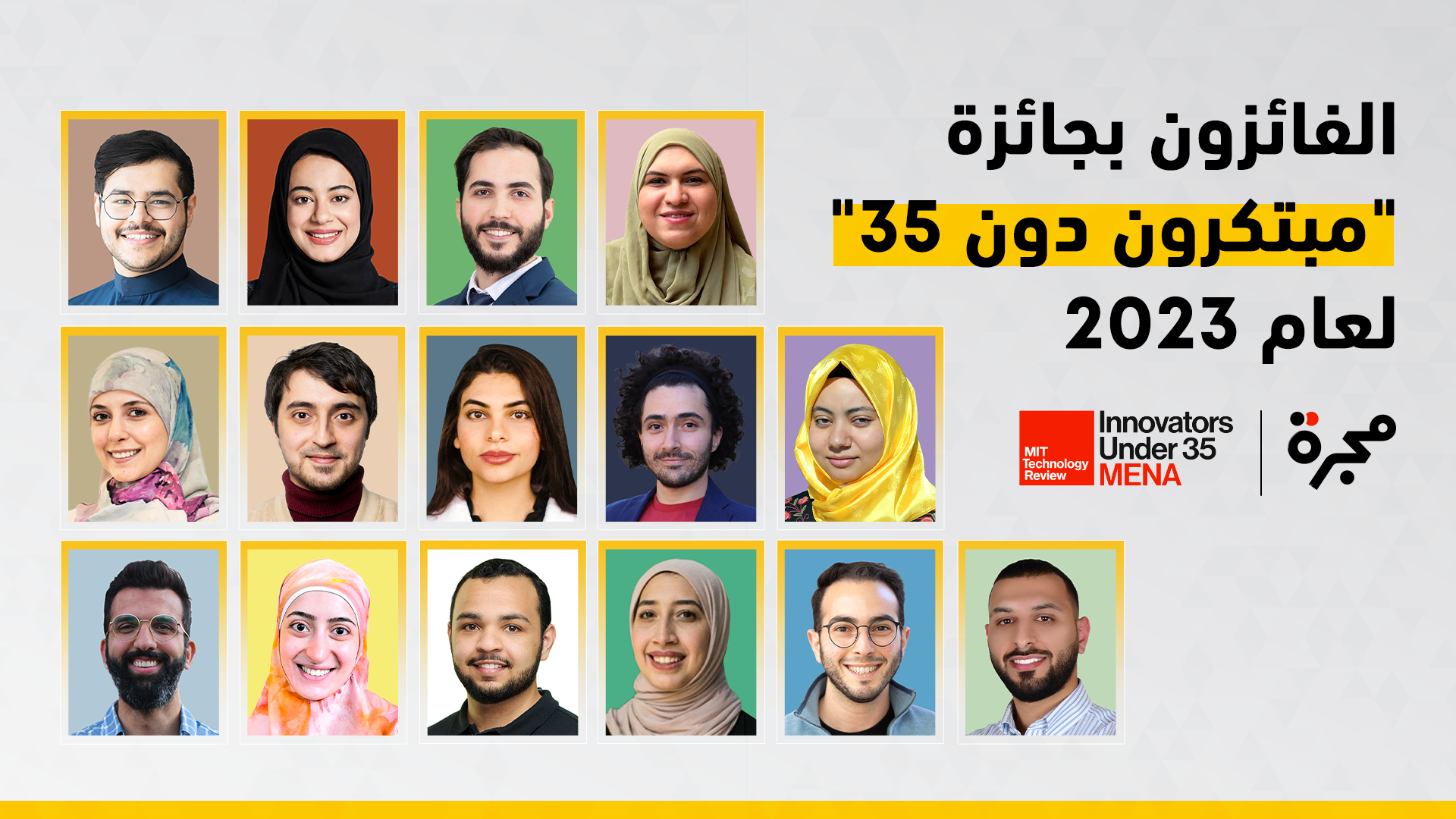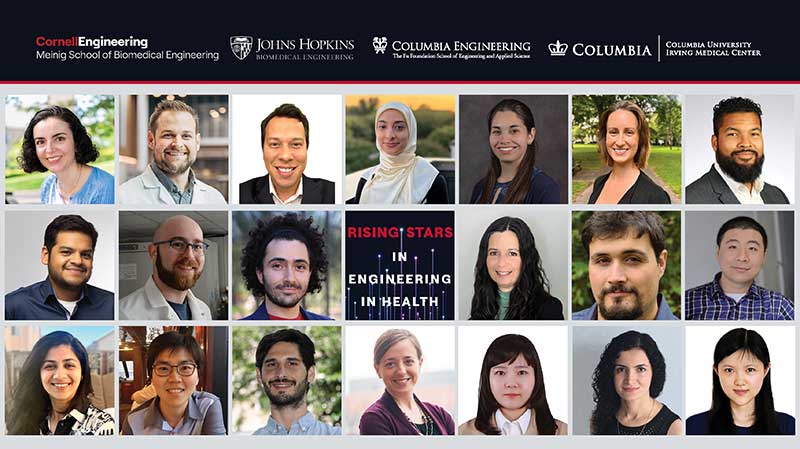Forbes 30 Under 30
In 2024, I was recognized as one of the 30 Under 30 in the MENA region by Forbes Middle East.

I operate at the intersection of AI and healthcare.
I completed my postdoctoral scholarship at Caltech where I developed AI systems to track the activity of surgeons from videos. Our research culminated in a publication featured on the front cover of Nature Biomedical Engineering and was selected as the "Top 100 Innovations" at Prototypes for Humanity. I received my PhD degree from the University of Oxford where I designed a suite of AI algorithms for explicitly dealing with limited labeled data. These ranged from large-scale pre-training of models on physiological time-series data and active learning with abundant unlabelled data to continual learning of models across time. Before that, I completed my undergraduate degree in biomedical engineering from Johns Hopkins University.
I was recently named as one of the top "Innovators Under 35" in the MENA region by MIT Tech Review Arabia, and selected as a "Rising Star in Engineering in Health" by Columbia, Cornell, and Johns Hopkins. My research has been published in top machine learning conferences including ICML and NeurIPS and in high-impact scientific journals such as Nature Biomedical Engineering and Nature Communications. I have also had the privilege to conduct AI research alongside colleagues and mentors at Ford Motor Company, the Mayo Clinic, Merck & Co., Flatiron Health, and Vicarious Surgical.

In 2024, I was recognized as one of the 30 Under 30 in the MENA region by Forbes Middle East.

In 2023, I was identified as one of the top Innovators Under 35 in the MENA region by MIT Tech Review Arabia.

In 2023, I was selected as one of the Rising Stars in Engineering in Health by Columbia, Cornell, and Johns Hopkins.
Feel free to reach out if you would like to chat.